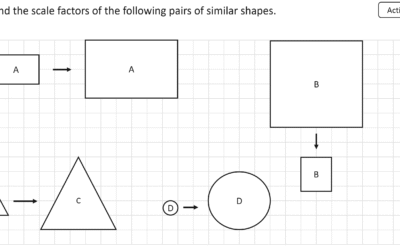Ever noticed how some students can ace a worksheet on one topic, but then struggle when that same topic is mixed in with others? They might be missing the power of Interleaving. This strategy alternates similar topics or problem types within a single practice session to help students differentiate and apply concepts flexibly.
The Gist: Variety Enhances Understanding
Interleaving contrasts with blocking, where you master one topic entirely before moving to the next. Instead, you mix practice of related skills (e.g., linear, quadratic, and exponential equations) so students have to constantly identify which strategy to use for each problem. This subtle switch drastically improves problem-solving abilities.
The Breakdown: Contextual Interference is Good
While it might feel harder in the moment, interleaving forces your brain to work harder:
- Enhanced Discrimination: By jumping between different problem types, your brain learns to better distinguish between them and recognize the subtle cues that signal which formula or method to apply.
- Stronger Recall: Each time you encounter a problem, you have to retrieve the correct strategy from memory, which reinforces that retrieval pathway.
- Improved Adaptability: This practice builds mental flexibility, crucial for real-world problem-solving where concepts rarely appear in isolation.
- It creates “contextual interference,” a desirable difficulty that ultimately deepens learning.
Pioneering work by researchers like Doug Rohrer has consistently shown interleaving’s benefits for transfer of knowledge to new situations.
The Evidence: Beyond Just Math
Interleaving’s effectiveness is widely supported by research:
- A 2023 meta-analysis of 60 studies found interleaving improved math application skills by 22-32% compared to blocked practice.
- In a 2024 sports study, mixed drills (interleaving different types of shots) enhanced coordination by 26% among athletes, demonstrating its broad applicability beyond academic subjects.
- It’s particularly helpful for students with lower working memory capacity, as it encourages deeper processing rather than rote memorization.
The Catch: It Feels Harder (At First)
The biggest hurdle? Students often perceive interleaving as more difficult and less productive during practice, leading to lower initial scores. A 2022 critique noted 12% lower initial scores for beginners. This “desirable difficulty” can lead to pushback, so gradual introduction and clear explanation of why it works are key.
Putting It to Work: Structured Mixing
Integrate interleaving thoughtfully into your practice routines:
- Homework Blends: Instead of assigning pages of only linear equations, mix in quadratic and exponential problems. After students work through them, discuss why they chose specific methods for each.
- Quiz Variations: Shuffle geometry problems on a quiz to practice identification (e.g., an area problem, then a perimeter problem, then a volume problem) rather than grouping them by type. A U.S. trial showed 24% better discrimination.
- Warm-ups/Exit Tickets: Use these short activities to mix concepts from different recent lessons, forcing students to recall and discriminate.
- Topic Switches in Sessions: Within a single class period, interleave factoring and expanding expressions, or solving for ‘x’ with graphing equations. A 2024 UK study found this boosted transfer of learning by 20%.
The Bottom Line: Mix it up to truly master it.
Your Turn: Look at your next unit. Can you identify two or three related, but distinct, problem types that you can interleave in practice or homework?









0 Comments